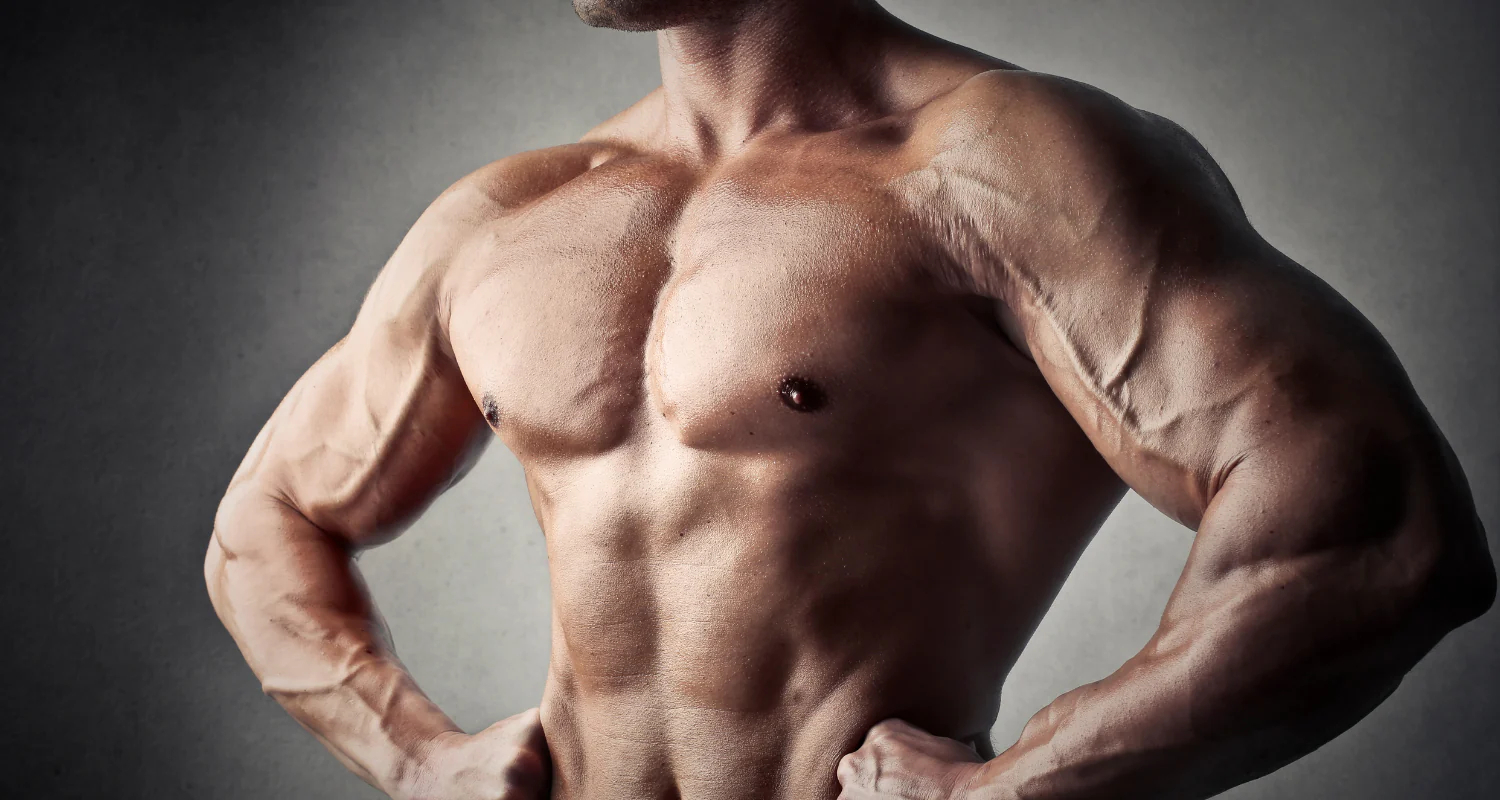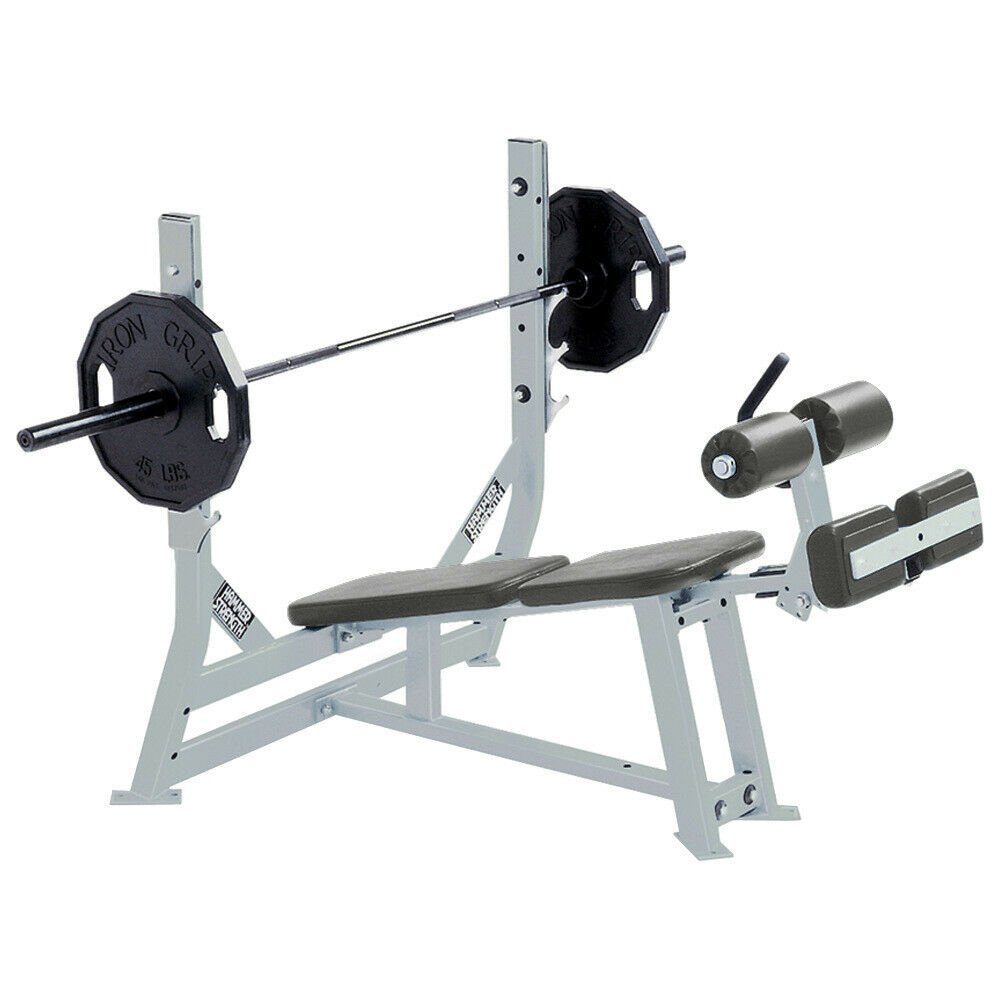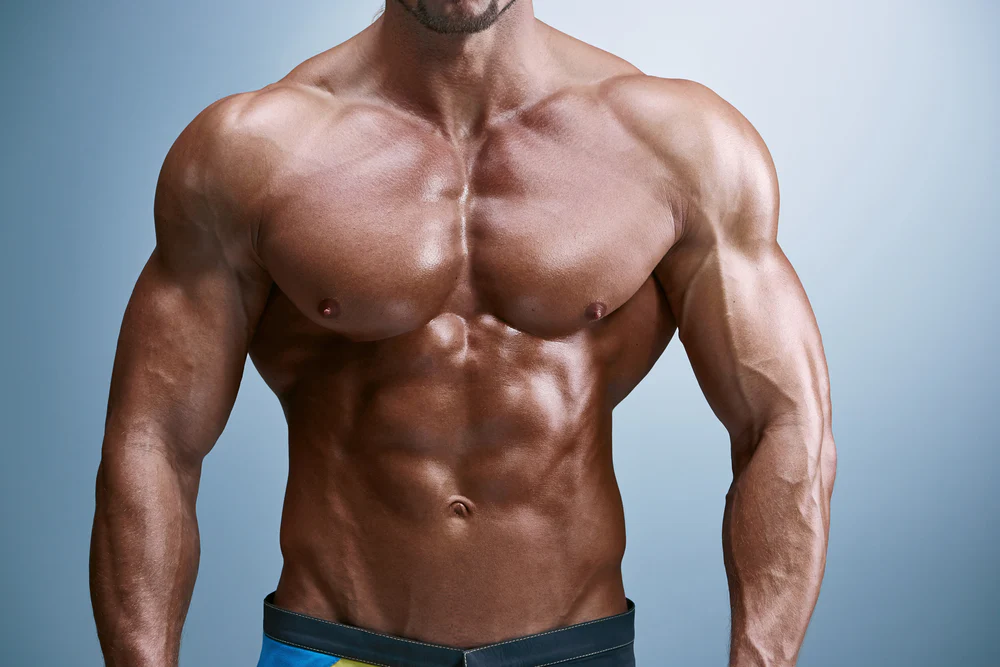Decline Machine Chest Press — Lower-Chest Mass Builder with Maximum Stability
The Decline Machine Chest Press is one of the most effective isolation-style pressing movements for developing the lower chest, emphasizing the costal fibers that create that deep, thick lower-pec line and full “armor-plated” chest appearance.
While the decline barbell and dumbbell presses are powerful free-weight options, the decline machine press offers unique advantages:
- safer and easier to load
- predictable resistance
- zero balance required
- smooth reps through the entire range
- perfect for high-volume hypertrophy work
- excellent for pre-fatigued chest later in the session
This is a machine built for lower-pec growth — and a staple in physique-focused training.
Muscles Worked
Primary
- Lower Pectoralis Major (costal fibers)
- Middle chest fibers (secondary)
Secondary
- Triceps
- Anterior deltoids (minimal if set up properly)
- Serratus anterior
Why Bodybuilders Use the Decline Machine Press
✔ 1. Superior Lower-Chest Isolation
The decline angle promotes pressing downward and inward, which aligns with the natural pull of the lower pec fibers. This makes the machine press one of the most direct ways to load this portion of the chest.
✔ 2. Stable Platform for Heavy Hypertrophy
Because the machine stabilizes your body, you can:
- use heavier loads
- push closer to failure
- slow the eccentric phase
- overload the contracted position
All without risking shoulder position or lower-back strain.
✔ 3. Safer Alternative to Decline Barbell or Dumbbell Work
Machine pressing removes:
- the risk of dropping dumbbells
- awkward setups
- shoulder irritation at steep decline angles
- necessity for a spotter when failing
Bodybuilders often prefer machine declines when chasing volume and intensity.
✔ 4. Excellent for Lower-Chest Shaping
If your physique needs:
- more “lower chest thickness”
- a deeper line along the base of the chest
- better lower-pec definition
…the decline machine press is one of the best hypertrophy tools available.
How to Set Up the Decline Machine Chest Press
- Adjust the Seat Height Properly
This is the most important step.
If the seat is too high:
- elbows flare too far upward
- upper chest gets more involvement
- shoulders take over
If the seat is too low:
- pressing angle becomes awkward
- triceps dominate
Correct setup:
The handles should line up around the lower to mid-chest level when you begin the movement.
- Choose Your Grip
Most machines allow:
- Neutral grip (easier on shoulders, more lower chest)
- Pronated grip (classic chest feel, more mid-chest involvement)
Neutral grip tends to match the decline pressing path more naturally.
- Lock In Your Torso Position
- Chest tall
- Shoulders pulled back and down
- Lower back lightly arched
- Eyes looking straight ahead
Don’t let your shoulders roll forward — that kills lower-chest activation immediately.
- Create Tension Before Starting
Pull the handles toward your chest slightly to preload the pecs.
Avoid beginning with slack — tension must be present from rep one.
How to Perform the Perfect Decline Machine Chest Press
- Control the Eccentric
Lower the handles slowly, letting elbows travel slightly down and out.
You should feel:
- a deep lower-chest stretch
- pec fibers lengthening
- smooth continuous resistance
Aim for a 2–3 second negative.
- Press Down and In
Drive the handles forward in a downward arc — not straight forward.
This is what makes the lower chest fire.
Think:
“Press down into my front pockets.”
- Peak Contraction
At the end of the rep:
- squeeze the pecs hard
- avoid locking out aggressively
- keep tension (don’t let the stack drop)
You should feel the lower chest tightening like a rope.
- Repeat With Precision
This is not a power movement.
Smoothness = more lower-chest activation.
Best Variations
- Neutral-Grip Decline Press
- A shoulder-friendly option
- More sweeping downward pressing path
- Maximum lower-pec emphasis
- Pronated-Grip Decline Press
- Slightly more mid-pec
- Stronger contraction at the top
- Feels more like a “standard” press
- Single-Arm Decline Press
Benefits:
- fixes imbalances
- increases stretch
- increases mind-muscle connection
- stabilizer activation increases slightly
Alternate arms for brutal lower-chest engagement.
- 1.5 Rep Method
Rep pattern:
- Full rep
- Half rep
- Full rep
Creates massive time under tension.
- Paused Stretch Reps
Pause 1–2 seconds at the bottom.
Builds:
- stretch-mediated hypertrophy
- lower-pec thickness
- tendon resilience
- Decline Mechanical Drop Set
Start with:
1️⃣ Pronated
2️⃣ Neutral
3️⃣ Single-arm (if possible)
Each step gets slightly easier, allowing extended time under tension.
Programming the Decline Machine Chest Press
For Lower-Chest Mass
- 3–5 sets
- 8–12 reps
- 2-minute rest
Use progressive overload.
For Deep Lower-Pec Stretch
- 3–4 sets
- 10–15 reps
- slow eccentric
- full range
As a Mid-Workout Power Set
Example structure:
- Heavy bench
- Incline dumbbell
- Decline machine press
Pressing strength is lower-chest dominant here.
As a Finisher
- 2–3 sets
- 15–20 reps
- short rest
- constant tension
Combine with dips for a brutal lower-chest burn.
Sample Chest Workouts Featuring the Decline Machine Press
Lower-Chest Biased Day
- Chest Dips — 4×6–10
- Decline Barbell Press — 4×6–8
- Decline Machine Press — 3×10–12
- High-to-Low Cable Fly — 3×12–15
Classic Bodybuilding Chest Day
- Flat Barbell Bench Press — 4×6–10
- Incline Dumbbell Press — 4×8–12
- Decline Machine Press — 3×10–12
- Pec Deck — 3×12–15
- Cable Crossover — 2×15–20
Machine-Only Chest Builder
- Incline Machine Press — 4×8–12
- Seated Machine Chest Press — 4×10–12
- Decline Machine Press — 3×12–15
- Pec Deck — 3×15–20
Common Mistakes
❌ Seat height too high
Shifts tension to shoulders and upper chest.
❌ Pressing straight forward
Removes the lower-chest bias.
❌ Rolling shoulders forward
Kills chest activation and risks injury.
❌ Letting stack touch
Zero tension = zero hypertrophy.
❌ Rushing the eccentric
The decline press shines in the stretch.
Who Should Use the Decline Machine Chest Press?
✔ Bodybuilders
Great for sculpting the lower-chest line.
✔ Beginners
Easy and safe pressing pattern.
✔ Lifters with shoulder issues
Machine stability reduces strain.
✔ Advanced lifters
Perfect for high-intensity work after heavy compounds.
Bodybuilder’s Final Takeaway
The Decline Machine Chest Press is one of the most dependable lower-chest builders you can use. It offers:
- Safe and heavy loading
- Easy progressive overload
- Superior lower-pec targeting
- Smooth, joint-friendly mechanics
- A perfect role in mid- to end-workout hypertrophy phases
If your goal is a thick, powerful, carved lower chest, this machine belongs in your rotation.






